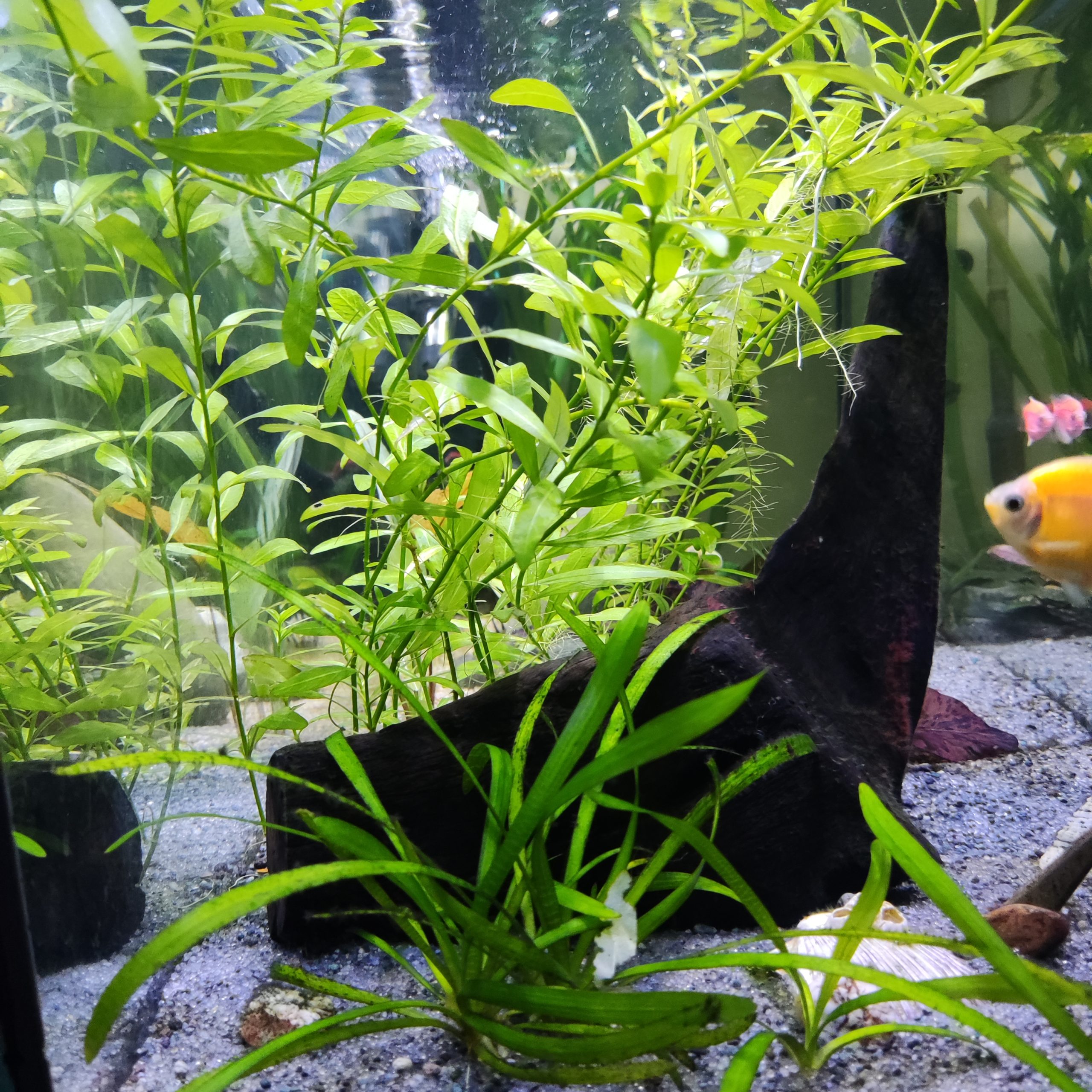Dive into the fascinating realm of plants for sand aquariums, where nature’s artistry meets scientific precision. These remarkable plants possess unique adaptations that enable them to flourish in the sandy depths, creating a captivating underwater landscape that delights the senses.
In this comprehensive guide, we’ll explore the secrets of selecting, planting, and nurturing these aquatic gems, empowering you to establish a thriving ecosystem that showcases the beauty and resilience of nature.
Planting Techniques: Plants For Sand Aquarium

Planting in a sand aquarium requires specialized techniques to ensure plant health and stability. Creating a stable root system and avoiding substrate disturbance are crucial for successful plant growth.
Anchoring Plants
- Planting Weights: Small, flat weights can be placed on the sand around the base of the plant to keep it in place. These weights distribute the plant’s weight evenly and prevent it from being uprooted by water flow.
- Root Tabs: Fertilizing tablets inserted into the sand near the plant’s roots provide nutrients and encourage root growth. The extended roots help anchor the plant more securely.
Water Flow and Circulation
Maintaining proper water flow and circulation is essential for plant health in a sand aquarium. Excessive water flow can damage plant leaves and dislodge them from the substrate. Adjustable powerheads or wavemakers can be used to create a gentle current that provides oxygen and nutrients to the plants without causing damage.
Care and Maintenance

Maintaining a thriving plant life in a sand aquarium requires specific care practices tailored to the unique substrate. Understanding the nutritional needs, lighting requirements, and water parameters is crucial for ensuring optimal plant health and preventing issues like nutrient deficiencies or algae growth.
Fertilization
Sand substrates are inherently nutrient-poor, making fertilization essential for supplying plants with the necessary nutrients for growth. Liquid fertilizers specifically designed for planted aquariums should be used regularly, following the manufacturer’s instructions. These fertilizers typically contain a balanced blend of macronutrients (nitrogen, phosphorus, potassium) and micronutrients (iron, calcium, magnesium, etc.) to promote healthy plant development.
Lighting
Adequate lighting is essential for photosynthesis, the process by which plants convert light energy into chemical energy. For most aquarium plants, a light intensity of 1-2 watts per gallon is recommended. The duration of lighting should be between 8-12 hours per day. High-intensity lighting can lead to algae growth, so it’s important to find a balance that supports plant growth without promoting algae blooms.
Water Parameters
Maintaining optimal water parameters is crucial for plant health. pH levels between 6.5-7.5 are generally suitable for most aquarium plants. Water hardness should be in the range of 5-15 dGH, and alkalinity should be between 3-8 dKH. Regular water testing using a reliable test kit is recommended to monitor these parameters and make necessary adjustments.
Monitoring Plant Health, Plants for sand aquarium
Regularly observing plant health is essential for identifying any potential issues. Healthy plants typically have vibrant green leaves with no signs of yellowing or browning. Stunted growth, leaf curling, or holes in leaves can indicate nutrient deficiencies or other problems. Early detection and addressing of these issues can prevent further deterioration and promote plant recovery.
Pruning and Maintenance
Regular pruning is crucial for maintaining plant health and preventing algae buildup. Remove dead or dying leaves, trim overgrown stems, and thin dense areas to promote water circulation and prevent stagnation. Pruning also encourages new growth and helps shape the overall appearance of the aquarium. Vacuuming the sand substrate regularly helps remove debris and excess nutrients, reducing the risk of algae growth.

When selecting plants for a sand aquarium, it’s essential to choose species that thrive in low-nutrient, coarse substrates. One such plant is the tammy fender plant milk , known for its ability to absorb nutrients from the water column. Its robust root system anchors it securely in the sand, making it an ideal choice for beginners.
Additionally, its lush foliage adds visual interest and provides hiding spots for small fish.
For a sand aquarium, consider species like Echinodorus parviflorus and Vallisneria spiralis. Vallisneria, also mentioned in the plants of the quran book , is a grass-like plant that helps maintain water quality. Sand aquarium plants have unique adaptations, such as narrow leaves and fibrous roots, to thrive in sandy substrates.
When creating a sand aquarium, selecting the right plants is crucial. These plants need to thrive in the unique conditions of a sand substrate. While researching suitable species, you may stumble upon information about epsom salt plantar wart treatment. While this topic is unrelated to aquarium plants, it highlights the importance of consulting reliable sources for both medical and aquarium-related knowledge.
Returning to the topic of sand aquarium plants, consider species like Vallisneria, Cryptocoryne, and Anubias, which are well-adapted to sandy environments and can enhance the aesthetics of your underwater ecosystem.